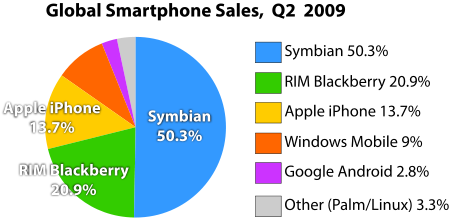Reagan famously said, “Mr. Gorbechev, tear down this wall!”
While arguments can be made whether Reagan’s challenge had any affect on the end of the Soviet Union, it still marked an important time in history. In that same speech, Reagan referenced some crudely spray painted words on the wall–“The wall will fall. Beliefs become reality.” These were probably the more important words that he said on that fateful day.
These words hold true for the current problem facing augmented reality smartphone app developers. Beliefs have become reality for the VCs that any important AR apps must be made for the iPhone. As Robert Rice, CEO of Neogence Enterprises, paraphrased what he’s heard, “We are only interested in deals that are… running on the iPhone….”
The problem with this is that Apple isn’t giving up access to the video stream from the camera. Current AR apps are either using the non-visual sensors like the GPS and accelerometer, or using single frames as a reference which make apps laggy and unreliable. Once again, Robert Rice opines about this problem in his post–The Candy Apple Conundrum:
But I am continually perplexed by Apple’s refusal to open up the undocumented APIs in their SDK to allow augmented reality researchers and developers access to the video stream from the camera. This is a critical element for any type of visual tracking (markers, feature tracking, and markerless tracking). Some people figured some work arounds to make it work with the 2.x version of the SDK which is nice, except that this automatically disqualifies any applications from distribution in the app store. What really kills me though, is that on one hand, Apple made a play for welcoming AR applications with the 3.x version of the SDK, but only provided access to the overlay, while at the same time completely changing where the undocumented API calls were located, further obfuscating things and handicapping all R&D.
It’s clear that there is a high level of frustration within developers and Robert’s not the only one to notice. Kim-Mai Cutler from Venture Beat talks about how, “[apps are] still being held back because they don’t have the right application programming interfaces for manipulating live video.” And back in July, Ori Inbar posted an Open Letter to Apple.
Why isn’t Apple opening up the video stream to developers? Is it for the Machiavellian reason that they are developing their own secret AR master take-over as hinted by their patent filings? Does any of this matter?
If we look at the Q2 2009 smartphone sales by Canalys, we see that the iPhone only holds 13.7% of the market. While Symbian dominates with a whopping 50.3%. What gives?

The iPhone has done a wonderful job of controlling the branding space of future smartphones, but the reality is that they are only number three. In this case, beliefs have become reality. While I’ll be the first person to crow about augmented reality on the iPhone if they do ever release the video stream, I also don’t think we should be holding our breath any longer. I find it sadly ironic that their iconic TV commercial from 1984 can be applied to them now.
Mr. Jobs, I am a small press blogger, but I sense the slow churn of animosity towards the iPhone. The apps are what make the iPhone sell, and if AR takes off while you’re still sitting behind your wall, hype will drive them to a Symbian or Android smartphone that does support augmented reality.
So tear down that wall, Mr. Jobs. Or we’ll find someplace else to go that doesn’t have any walls.

[…] This post was mentioned on Twitter by Tom Carpenter, AppleNewsies. AppleNewsies said: Mr. Jobs, Tear Down This AR Wall! « The Future Digital Life / http://bit.ly/1QNZ19 […]
[…] “AR capable” device that targets other markets is, of course, the iPhone. Instead of complaining about the iPhone’s lack of support of augmented reality, can’t AR enthusiasts take […]